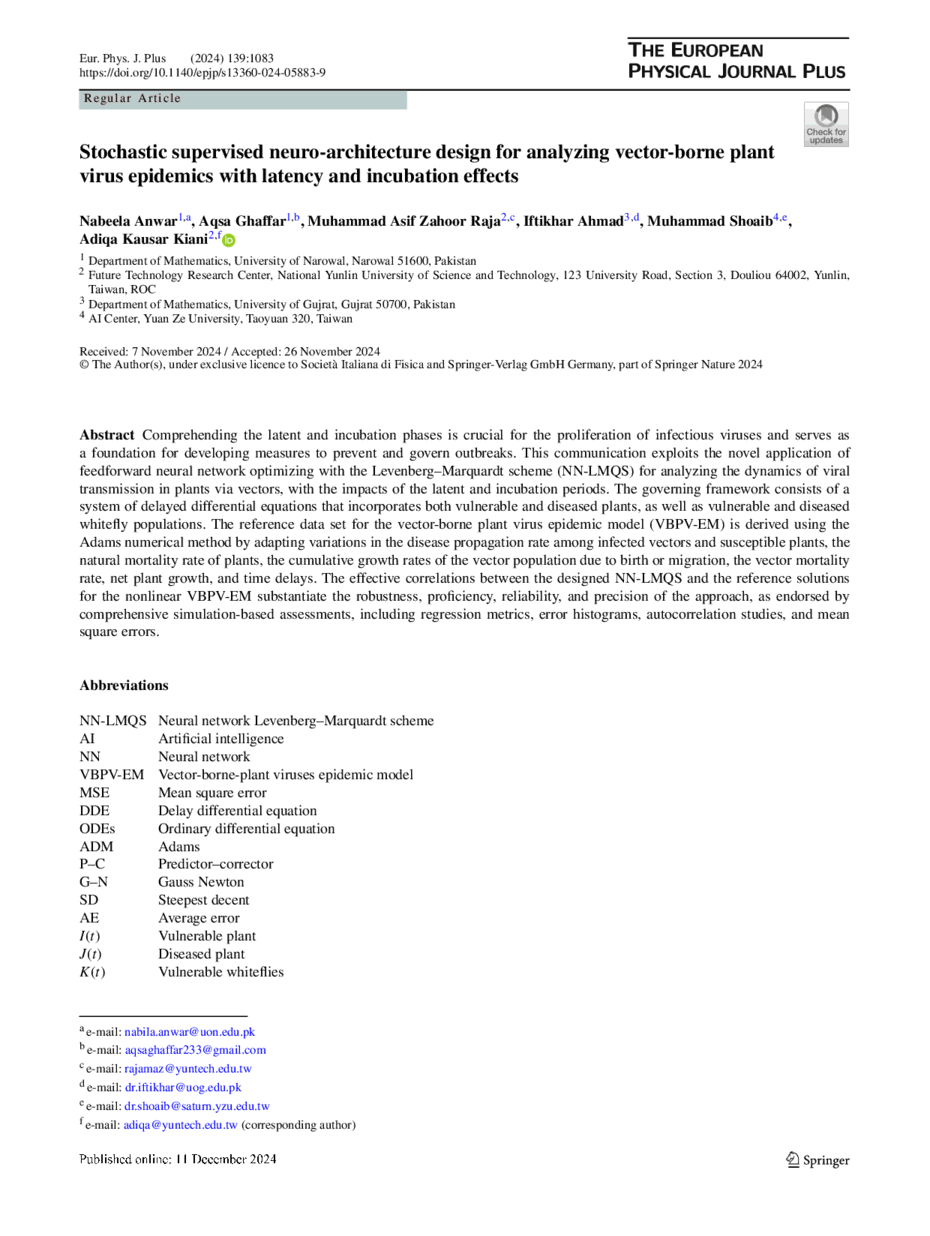https://doi.org/10.1140/epjp/s13360-024-05883-9
Regular Article
Stochastic supervised neuro-architecture design for analyzing vector-borne plant virus epidemics with latency and incubation effects
1
Department of Mathematics, University of Narowal, 51600, Narowal, Pakistan
2
Future Technology Research Center, National Yunlin University of Science and Technology, 123 University Road, Section 3, 64002, Douliou, Yunlin, Taiwan, ROC
3
Department of Mathematics, University of Gujrat, 50700, Gujrat, Pakistan
4
AI Center, Yuan Ze University, 320, Taoyuan, Taiwan
Received:
7
November
2024
Accepted:
26
November
2024
Published online:
11
December
2024
Comprehending the latent and incubation phases is crucial for the proliferation of infectious viruses and serves as a foundation for developing measures to prevent and govern outbreaks. This communication exploits the novel application of feedforward neural network optimizing with the Levenberg–Marquardt scheme (NN-LMQS) for analyzing the dynamics of viral transmission in plants via vectors, with the impacts of the latent and incubation periods. The governing framework consists of a system of delayed differential equations that incorporates both vulnerable and diseased plants, as well as vulnerable and diseased whitefly populations. The reference data set for the vector-borne plant virus epidemic model (VBPV-EM) is derived using the Adams numerical method by adapting variations in the disease propagation rate among infected vectors and susceptible plants, the natural mortality rate of plants, the cumulative growth rates of the vector population due to birth or migration, the vector mortality rate, net plant growth, and time delays. The effective correlations between the designed NN-LMQS and the reference solutions for the nonlinear VBPV-EM substantiate the robustness, proficiency, reliability, and precision of the approach, as endorsed by comprehensive simulation-based assessments, including regression metrics, error histograms, autocorrelation studies, and mean square errors.
Copyright comment Springer Nature or its licensor (e.g. a society or other partner) holds exclusive rights to this article under a publishing agreement with the author(s) or other rightsholder(s); author self-archiving of the accepted manuscript version of this article is solely governed by the terms of such publishing agreement and applicable law.
© The Author(s), under exclusive licence to Società Italiana di Fisica and Springer-Verlag GmbH Germany, part of Springer Nature 2024
Springer Nature or its licensor (e.g. a society or other partner) holds exclusive rights to this article under a publishing agreement with the author(s) or other rightsholder(s); author self-archiving of the accepted manuscript version of this article is solely governed by the terms of such publishing agreement and applicable law.





